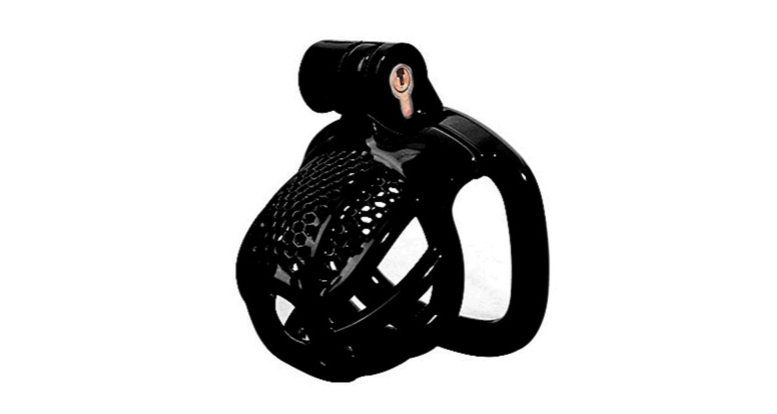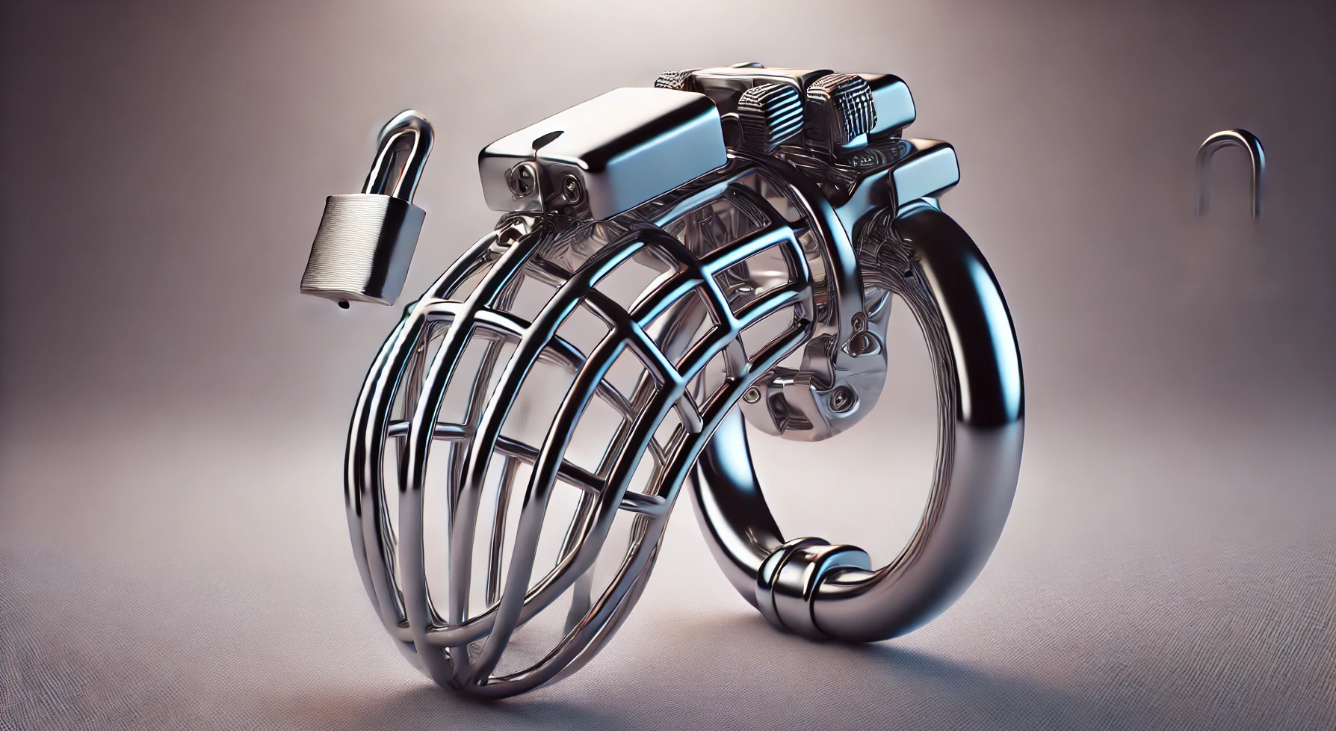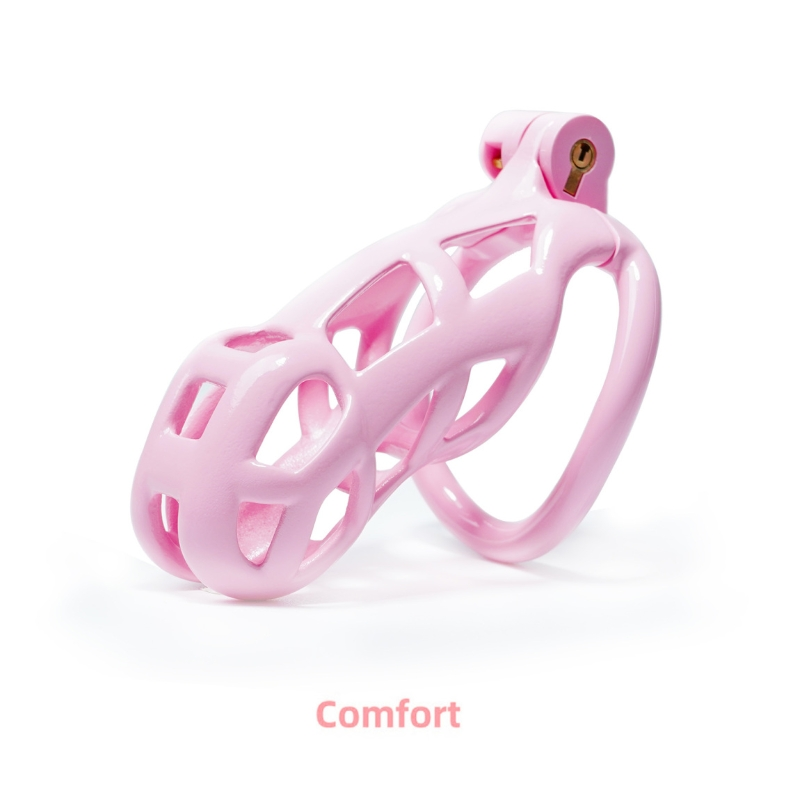The Ultimate Guide to Male Chastity Devices: Stainless Steel vs. Resin vs. TPE
2025-04-22
Introduction to Male Chastity Devices
A male chastity cage is a specialized device designed to restrict access to the wearer’s genitals, often used in BDSM, power exchange dynamics, and orgasm control. These devices serve multiple purposes:
-
Enhancing trust and submission in Dominant/submissive relationships
-
Preventing masturbation or penetration (used in cuckolding, chastity play, or virginity control)
-
Adding psychological stimulation through denial and control
Choosing the right material is crucial for comfort, security, and long-term wear. The three most common materials are:
-
Stainless Steel – Durable and secure
-
Resin (3D Printed) – Lightweight and customizable
-
TPE (Thermoplastic Elastomer) – Flexible and beginner-friendly
Let’s explore the advantages, disadvantages, and best use cases for each type.
1. Stainless Steel Chastity Cages: The Gold Standard for Security
Why Choose Stainless Steel?
Stainless steel chastity cages are the most secure and long-lasting option available. They are favored by experienced users who prioritize durability, hygiene, and inescapability.
Key Advantages:
-
Extreme Durability – Resistant to breakage, bending, or wear over time
-
Hygienic & Easy to Clean – Non-porous surface prevents bacteria buildup (ideal for long-term wear)
-
Heavy-Duty Security – Nearly impossible to escape without the key
-
Weight & Sensation – The solid metal provides a constant reminder of confinement
-
Aesthetic Appeal – Sleek, dominant look popular in BDSM dynamics
Potential Drawbacks:
-
Heavier than other materials – May cause discomfort during extended wear for some users
-
Less discreet under clothing due to weight and rigidity
-
Requires proper sizing – An ill-fitting steel cage can cause chafing
Best For:
-
Long-term chastity wearers
-
BDSM enthusiasts who value security
-
Those who prefer a cold, unyielding sensation
2. Resin Chastity Cages: Lightweight & Customizable
Why Choose Resin?
Resin (often 3D-printed) chastity cages are a modern, lightweight alternative to metal. They are hypoallergenic, comfortable, and highly customizable in design.
Key Advantages:
-
Lightweight & Comfortable – Ideal for all-day wear without strain
-
Frosted Texture – Reduces friction and irritation
-
Customizable Fit – Many models come with adjustable base rings (e.g., 5-size options)
-
Discreet Under Clothing – Less noticeable than metal cages
-
Non-Conductive – Safe for play involving electrostimulation
Potential Drawbacks:
-
Less rigid than steel – Determined wearers may break or bend them
-
Porous material – Requires more frequent cleaning than stainless steel
-
Not as unyielding – Some users prefer the psychological weight of metal
Best For:
-
Beginners exploring chastity play
-
Those who prioritize comfort over extreme security
-
People with metal allergies
-
Wearers who need a discreet option
3. TPE Chastity Cages: Soft & Flexible for Beginners
Why Choose TPE?
TPE (Thermoplastic Elastomer) cages are the softest and most flexible option, making them ideal for first-time users or those with sensitivity concerns.
Key Advantages:
-
Ultra-Comfortable & Flexible – Moves naturally with the body
-
Gentle on Skin – Ideal for sensitive wearers
-
Lightweight & Discreet – Barely noticeable under clothing
-
Affordable Entry Point – Great for testing chastity before investing in premium materials
Potential Drawbacks:
-
Least Secure – Can be stretched or removed with effort
-
Less Durable – Prone to wear and tear over time
-
Requires Strict Hygiene – Porous material needs frequent washing
Best For:
-
Newbies trying chastity for the first time
-
Short-term or occasional wear
-
Those who need a budget-friendly option
Comparison Table: Which Material is Right for You?
| Feature | Stainless Steel | Resin (3D Printed) | TPE |
|---|---|---|---|
| Security | ★★★★★ (Most Secure) | ★★★☆☆ (Moderate) | ★★☆☆☆ (Least Secure) |
| Comfort | ★★★☆☆ (Heavy) | ★★★★☆ (Lightweight) | ★★★★★ (Softest) |
| Durability | ★★★★★ (Unbreakable) | ★★★☆☆ (Durable) | ★★☆☆☆ (Wears Out) |
| Hygiene | ★★★★★ (Non-Porous) | ★★★☆☆ (Needs Cleaning) | ★★☆☆☆ (High Maintenance) |
| Discretion | ★★☆☆☆ (Noticeable) | ★★★★☆ (Subtle) | ★★★★★ (Invisible) |
| Best For | Long-term, BDSM | Everyday wear | Beginners |
How to Choose the Right Chastity Cage for You
1. Consider Your Experience Level
-
Beginners: Start with TPE or resin for comfort
-
Intermediate Users: Try resin for a balance of security and comfort
-
Advanced Users: Opt for stainless steel for maximum control
2. Think About Wear Duration
-
Short-term (hours/days): TPE or resin
-
Long-term (weeks/months): Stainless steel
3. Prioritize Hygiene Needs
-
If you prefer low-maintenance cleaning, go for stainless steel
-
If you need lightweight comfort, resin is ideal
4. Match Your BDSM Dynamic
-
Dominants enforcing strict control: Steel
-
Submissives needing comfort: Resin or TPE
Final Thoughts: Which Chastity Cage Should You Buy?

Each material has unique strengths, so the best choice depends on:
-
Your experience level
-
How long do you plan to wear it
-
Your need for security vs. comfort
For absolute security & long-term wear: Stainless Steel
For a balance of comfort and control: Resin (3D Printed)
For beginners or sensitive wearers: TPE
No matter which you choose, proper sizing, hygiene, and communication with your partner are key to a safe and enjoyable chastity experience.









